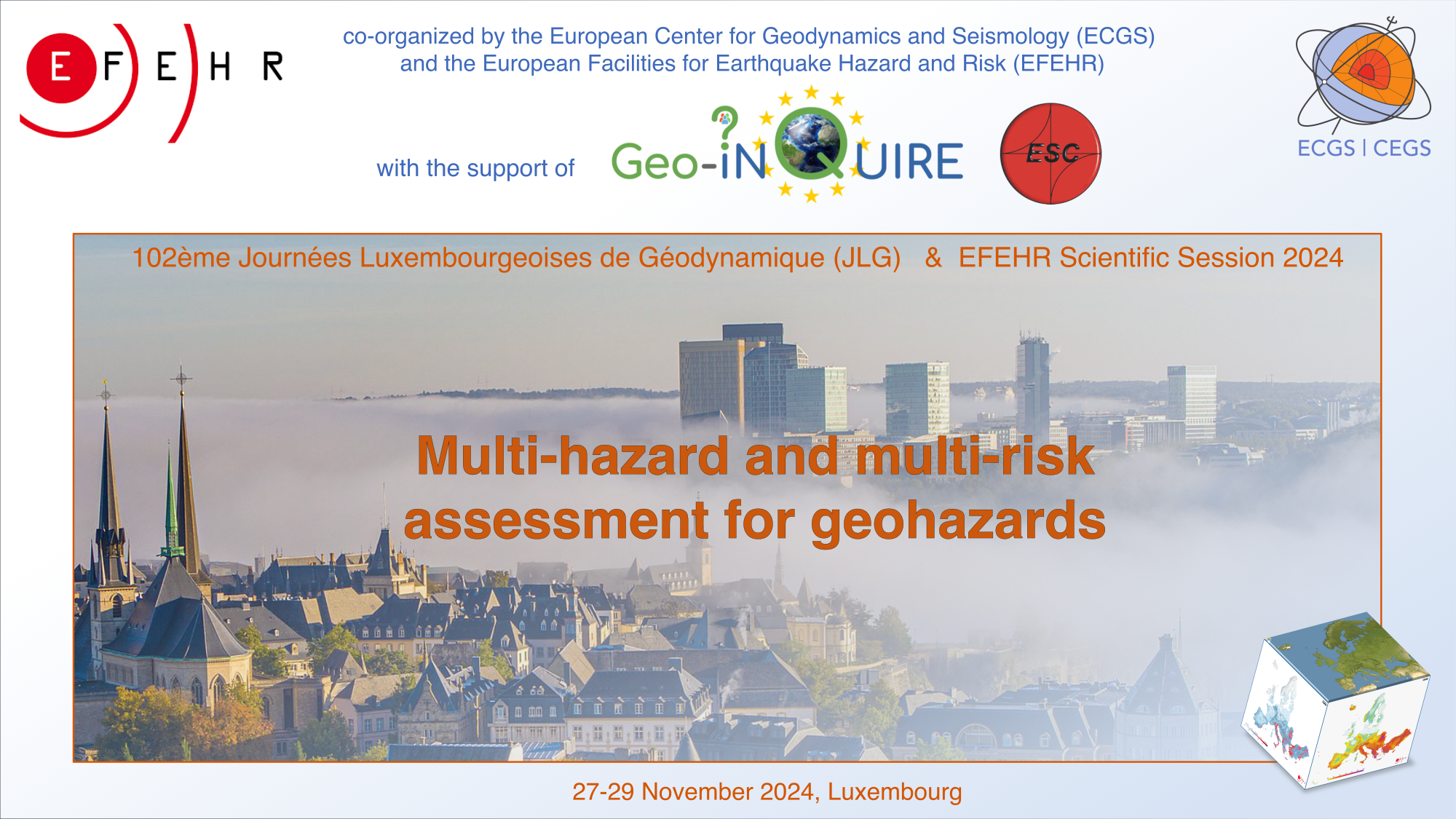102nd Journées Luxembourgeoises de Géodynamique (JLG) & EFEHR Scientific Session 2024
Published on Monday October 14, 2024

Many thanks to all participants for a great meeting!

Dates: 27-29 November 2024
Location: Alvisse Parc Hotel, Luxembourg
Hosted by: ECGS
General Overview
Risk assessment bridges the geo-hazards to their societal consequences. As such, it constitutes the most outward-facing component in the chain, starting from gathering the data and modeling the phenomenon towards understanding its consequences. This is where models meet reality; and the reality is invariably complex and multi-risk. In the past decades, the scientific community has established an understanding of single hazards and their direct consequences. However, there is still a lot to explore regarding the complex interactions between hazards and their consequences on society, those situations in which the union is larger than the simple mathematical sum, and where a direct cause and effect pattern can be sometimes difficult to establish.
In this session, we provide a brief outlook through some of the challenges that we face in multi-hazard and multi-risk analysis of geohazards and their consequences. We would like to address questions such as:
- What are the challenges, needs and gaps as seen from the “real world”? What is the point of view of stakeholders and the private sector?
- How can we make the most of multidisciplinary datasets?
- Towards multi-hazard or hazard-agnostic exposure models? Can multi-hazard vulnerabilities be possibly harmonised?
- What is the future of earthquake ground motion models?
- Which are the challenges for time-dependent seismic hazard assessment? Can short-term forecasting become operational?
- How to capture the interactions between slow-onset (e.g., sea-level rise, ageing, heat waves) and fast-onset events (e.g., tsunami, earthquakes, landslides)?
- Cross-cutting: how can Machine learning and AI help us with the above challenges?
- How to communicate our research with a broader audience?
We invite the EFEHR members, as well as researchers, practitioners, policymakers, and anyone passionate about the intersection of AI, Earth Sciences, and societal resilience to geo-hazards to participate in this enlightening and inspiring event.
Conveners
- Laurentiu Danciu (ETH Zurich)
- Adrien Oth (ECGS)
- Fatemeh Jalayer (UC London)
Local Organisers
- Adrien Oth
- Yannick Breh
- Maxime Jaspard
- Gilles Celli
Programme
The full programme of the meeting can be found here.
Venue and Practical Aspects
The meeting was held from 27 to 29 November 2024 at the Alvisse Parc Hotel Luxembourg.
